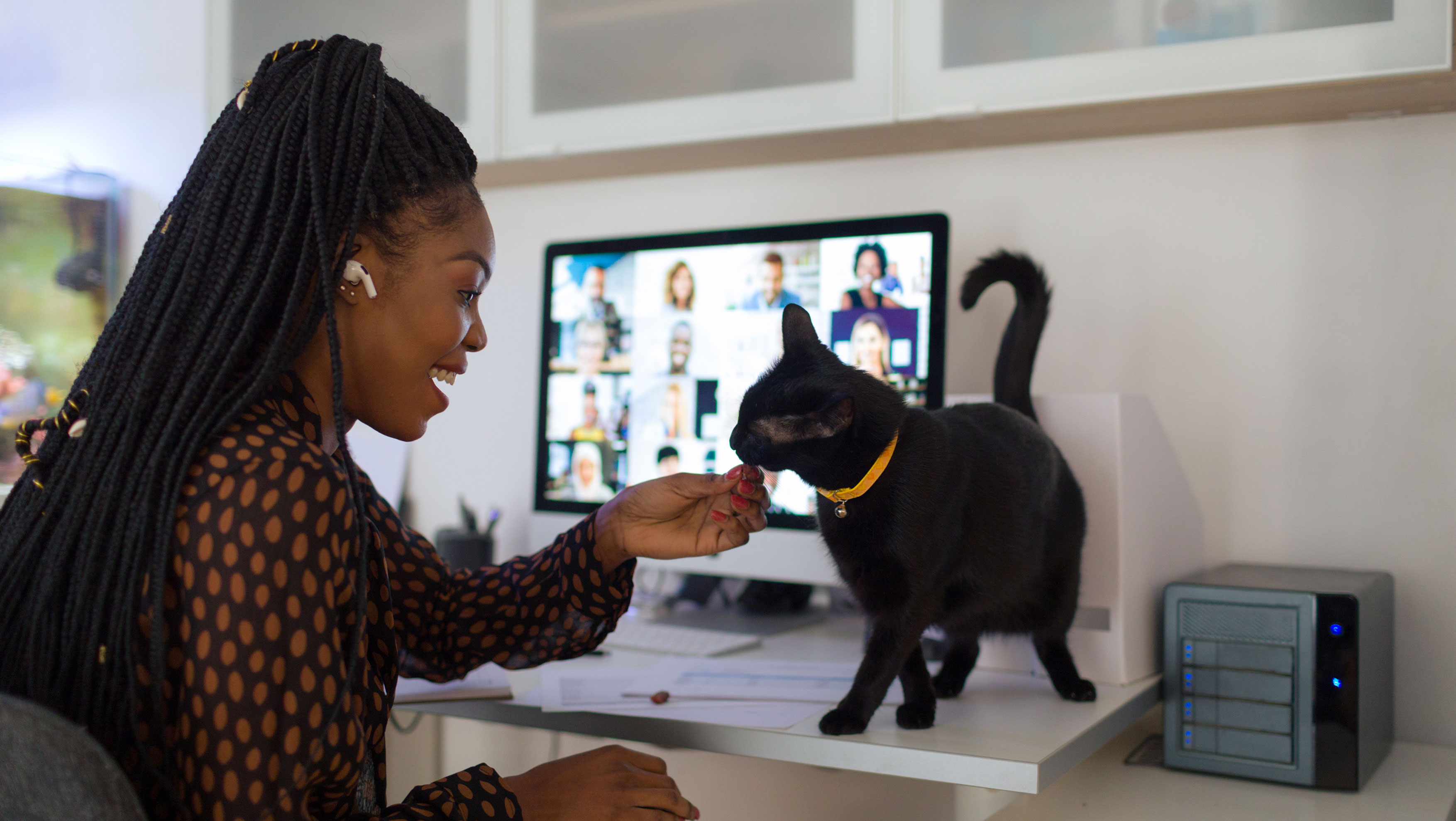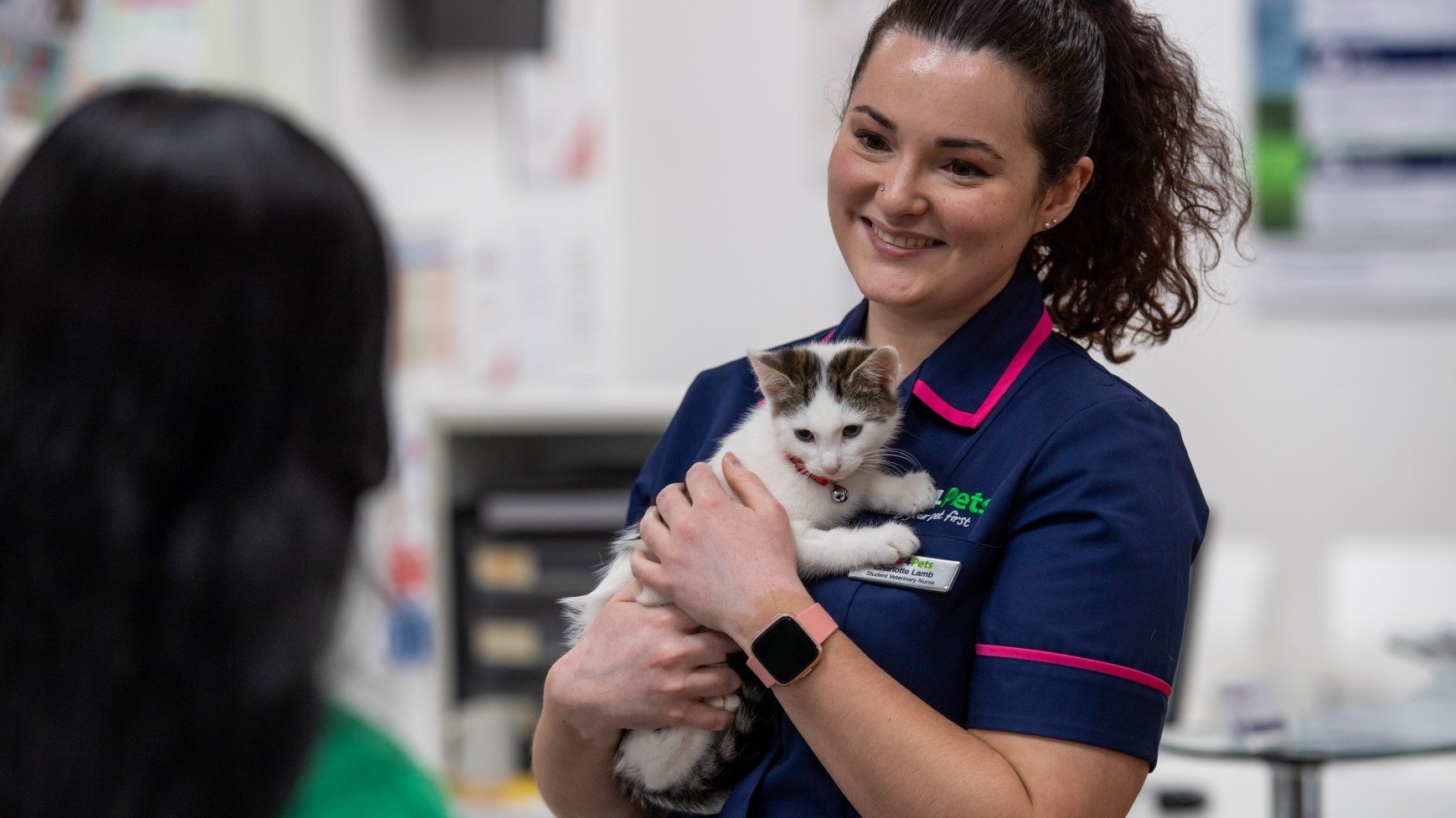
Cat Microchipping
Despite our best efforts, it is not uncommon for cats to get lost or struggle to find their way home. Should this happen, a microchip will give them the best chance of being reunited with you.
A microchip is a small device about the size of a grain of rice. The microchip is inserted under your cat’s skin, between their shoulder blades, via a quick injection. Once inserted, a cat cannot feel the microchip and the special capsule around it means that it does not break down and is designed to last your pet’s lifetime.
The microchip is coded with a unique number that can be read by a scanner. Microchips do not store personal data – this is kept against the unique identification number on a secure database. If your cat is found and scanned, the microchip database is accessed online and the organisation that has your cat, for example the veterinary surgery, a rescue centre or the police, can use the number to find your details. You can then be contacted and your pet safely reunited with you.
Cat microchipping to be made mandatory
From June 2024, it will be compulsory for all cats to be microchipped.
More about microchipping your cat
One of the things that many cat owners love about their pets is their inquisitive nature. It is also one of the main reasons that cats end up lost, as they investigate the world around them. Sadly, pet theft is also a problem, particularly with rare or expensive breeds. Sometimes life events like moving house can cause cats to become confused enough that they get lost, and struggle to find their way home.
Cats can also have a habit of visiting multiple households. This can become confusing, and does sometimes result in an owned cat being ‘adopted’ by a well-meaning family. Friendly stray cats may also just be lost, and can also be absorbed into a new household. A microchip provides a way to ascertain if a cat is truly a stray or merely lost, and can also be the only way to prove ownership if there is any dispute.
Tags, while useful so long as they are on safety collars, are not a guaranteed method of identification, as they can easily be lost or replaced.
The majority of cats naturally love being outside, roaming and hunting, but the outdoors can pose certain threats to cats. From cars to fights with other cats over territory, there are many reasons cats can become spooked, run away and end up lost miles away from home.
Some cats can even end up accidentally trapped in somebody else’s shed or garage and can be missing for days. Collars and identification tags are never a guarantee as they could easily break and fall off when cats are out and about.
Microchips are designed to last for a cat’s lifetime and so if a cat does become lost or stolen, the chances of them being returned to their owner are hugely improved by the presence of a microchip.
All cats are unique individuals and whilst most may enjoy spending time outside, they may prefer staying indoors instead. This means that if they ever do explore outdoors, they are likely to be more easily spooked by the unfamiliar surroundings and run away.
Due to their little experience outside they are likely to get lost and be unable to find their way back home. Getting your cat microchipped, even if they are more of an indoor cat, is always the safest option because you can never predict that they won’t venture out at some point and go missing.
Cats who are likely to travel abroad on family holidays will also need a microchip as part of the required identification to receive a Pet Passport.
Kittens can often be microchipped at their first vaccination appointment, at around 8 weeks of age. It is always ideal to make sure your cat is microchipped before letting them go outside for the first time in case they get lost.
The procedure is very quick and is considered relatively painless, it should be no more painful than an injection or having their blood taken for a test. Some owners ask for their pet to be microchipped whilst they are being spayed or neutered if they will not be let out of the house before this time – this means the microchip is implanted while the cat is under anaesthetic. This is a common practice, but does run the risk of your cat not having identification if they are accidentally let out of the house before then.
If you have a new kitten, why not take a look at our Pet Health Plans? A microchip is included with our Best Start in Life pack, along with lots of other extras.
It is a horrible experience if your cat goes missing, but there are some important things that you can do:
- Tell the microchip database where the chip is registered immediately
- Contact your vet, local vet surgeries and rescue centres in your local area and leave your cats details (including their chip number) with them
- Ask your neighbours to check sheds, outbuildings, garages and cars
- Send out a Lost Pet Alert on the VIP club app to other app members in your local area. The VIP club app (and the Find my VIP service) is free.
- Put up posters in your local area with a good photo of your cat and your contact details. You can create a Lost Pet Poster for free within the VIP club app.
- Use social media to post about your missing cat and ask your friends, neighbours and local forums to share the posts. You can also create a social media post within the VIP club app.
Sadly, the microchip is only used as identification and does not work as a tracker.
Any time your personal contact details change, including details such as your mobile phone number, you must update the microchip company with your new details. Changing your details at your vet will not change your microchip details, as these are held by a separate company.
This is the same if you rehome an animal which is already microchipped. The physical chip does not have to be touched, but the unique 15-digit number needs to be assigned to your details rather than that of a previous owner.
It is your responsibility to contact your microchip company to change details, but your vet can help you if you have lost your pet’s microchip number or are not sure which company your pet’s microchip is registered with.
How to update:
- Determine the manufacturer of your pet's microchip. This should be on any microchip paperwork you hold.
- Determine which database holds your contact details. From your cat's microchip paperwork, or from the microchip company's website, find out which database your pet's microchip is registered on. Each microchip manufacturer contracts with a specific database. NOTE: If you do not know either the database or the manufacturer, these can be determined by the chip number prefix (the first part of your cat's microchip number) which is each unique to a certain database. If you also do not know your pet's microchip number, contact your vet to see if they have this information stored, or arrange to have your pet brought in to be scanned so you can get the number.
- Fill out the change of details form. Each database will have a form you can fill out which will allow you to change your details. This may incur a small cost.
If your cat is microchipped, you may also want to consider fitting a microchip cat flap in your home. These cat flaps scan for a microchip and only allow entry into the home if the cat’s microchip number is programmed to the cat flap. This will help keep unwanted cats out of your home and keep your cat safe from strange cats fighting with them.
A microchip cat flap doesn’t require your cat to wear a tag on a collar which can be uncomfortable and is easily lost, leaving your cat at risk of being stuck outside.
For multi-cat households microchip feeding bowls can also be used. These only allow a cat access to their own specific bowl, and can be useful with greedy cats who eat other cat’s food, or in cases where one cat is on a different diet, either life stage or therapeutic.
A qualified microchip implanter will place the microchip under the skin between the shoulder blades of your cat. All vets and nurses are qualified to implant microchips, and many pets have their microchip implanted at the vets. The procedure is very quick, and most cats experience little to no discomfort. It is very important to have microchip implantation done by a qualified individual as complications can arise if performed incorrectly.
The microchip only needs to be placed once as it is designed to last for the life of the cat.
Book a microchip appointmentAs pet owners, losing a pet is right up on the list of things we don’t ever want to think about happening. However, it is a sad fact that many pets go missing every year.
Almost all pets can be microchipped, including cats, dogs, rabbits, tortoises, parrots, ferrets and snakes. Microchips offer a more permanent way of making sure your pet is always identifiable and that you can always be contacted in the event of them being found.
Health Plans to keep your cat healthy
At Vets4Pets we offer a range of Health Plans that make essential routine treatments more affordable. You'll save money on things like annual vaccinations, flea and worm treatment and routine health check-ups.

Cat Advice
Read more of our expert cat advice to keep your cat happy and healthy.
